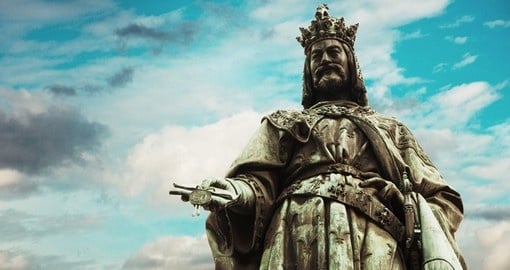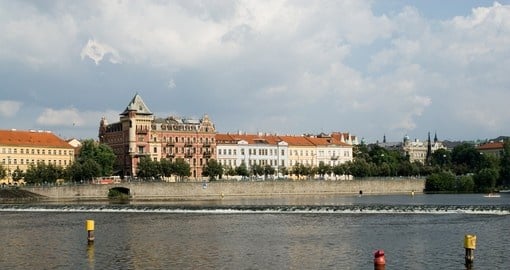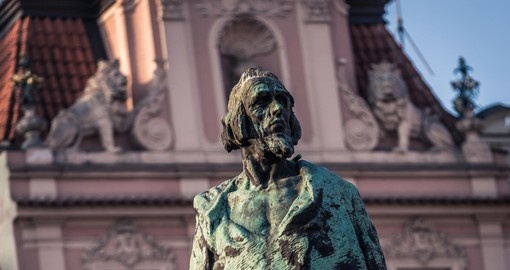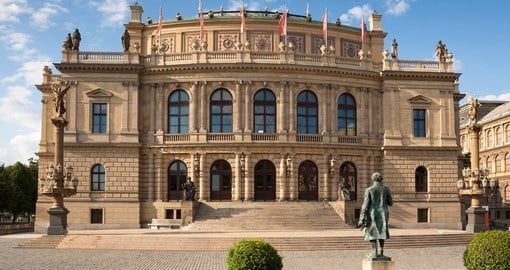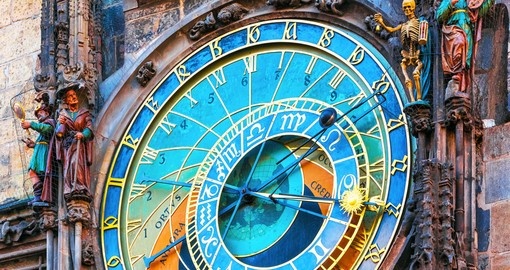Czech Republic History
Human settlements in the present-day Czech Republic date back to the Paleolithic era. By the 3rd century BC, Celtic migrations began, followed by Germanic tribes in the 1st century BC. Despite these early settlements, it was not until late the 9th century that the Czech state of Bohemia was formed. Bohemia came under the control of the Great Moravian Empire. When this empire collapsed in 907, it was not long before Bohemia became part of another powerful empire, the Holy Roman Empire, in 1002.
Bohemia, once a duchy, was elevated to the status of a kingdom in 1212, continuing to grow into a significant regional power during the Middle Ages. Bohemia reached its greatest territorial extent during the 13th and 14th centuries. The 14th century is considered the “Golden Age of Czech history”. During the reign of Czech king Charles IV, who would go on to become the King of Italy, King of the Romans and the Holy Roman Emperor, the kingdom experienced a cultural rebirth. Charles University was established in 1348 becoming the first university in Central Europe. Charles unified Brandenburg, Lusatia and Silesia all under the Czech crown.
Early in the 16th century, Bohemia came under Habsburg control. Unhappiness about this tightening control led to the Thirty Years’ War in 1618 that spread through Europe. The Dark Ages descended on the kingdom and lasted from 1620 until late in the 18th century. The Czech lands faced significant population decreases due to war, disease and famine and all religions except for Catholicism were banned. Following the dissolution of the Holy Roman Empire in 1806, Bohemia became part of yet another empire, the Austrian Empire.
The First World War witnessed approximately 1.4 million Czech soldiers fight, of which, around 150,000 perished. When the war ended in 1918, so too did the Habsburg Empire allowing Bohemia to form the independent republic of Czechoslovakia. During the interwar period, Czechoslovakia remained the only democracy in this part of Europe, affording extensive rights (for the time) to its citizens.
Following the Munich Agreement of 1938, Czechoslovakia was annexed to Germany and came under German occupation. It wasn’t until 1945 that parts of the country were liberated by the Red Army. As a result of this liberation, the people of Czechoslovakia felt a great appreciation for the Soviets. This, coupled with anger at the West for failing to intervene, allowed the Communist Party of Czechoslovakia to come to power in 1946. The country’s position as a firm Soviet ally was solidified in 1948.
Late in the 1960s, Alexander Dubcek formed a new leadership that led to what is commonly referred to as the “Prague Spring”. Dubcek greatly changed the way things were done in Czechoslovakia by presenting liberalizing reforms. Unfortunately, the Soviets grew increasingly wary of these reforms and sent in tanks. Dubcek was replaced by Gustav Husak and for the next two decades, Czechoslovakia steadfastly followed Soviet policies.
The Velvet Revolution of 1989 occurred as the communist regime collapsed. It was given that name because the revolution took place without any violence. On the first of January, 1993 Czechoslovakia ceased to exist, instead dissolving into two states, the Czech Republic and the Slovak Republic. In 2004, the Czech Republic joined the European Union. Today it ranks among the top thirty nations in the world, offering great culture, history, fascinating World Heritage Sites and much more.
Czech Republic Travel Information
At Goway we believe that a well-informed traveller is a safer traveller. With this in mind, we have compiled an easy-to-navigate travel information section dedicated to the Czech Republic.
Learn about the history and culture of the Czech Republic, the must-try food and drink, and what to pack in your suitcase. Read about the Czech Republic's nature and wildlife, weather and geography, along with 'Country Quickfacts' compiled by our travel experts. Our globetrotting tips, as well as our visa and health information, will help ensure you're properly prepared for a safe and enjoyable trip. The only way you could possibly learn more is by embarking on your journey and discovering the Czech Republic for yourself. Start exploring… book one of our Czech Republic tours today!
Get a Trip Quote Order a Brochure






